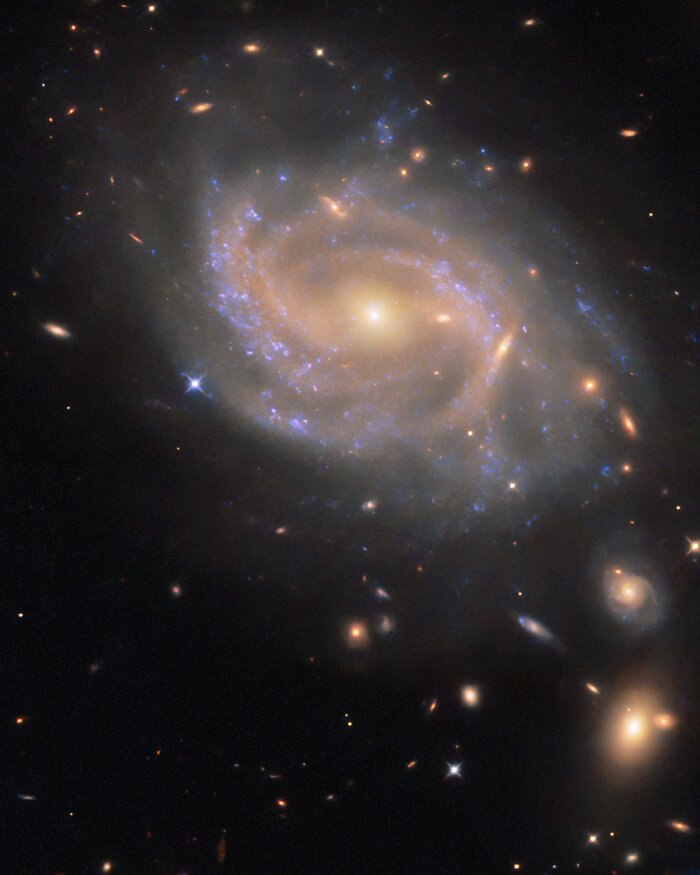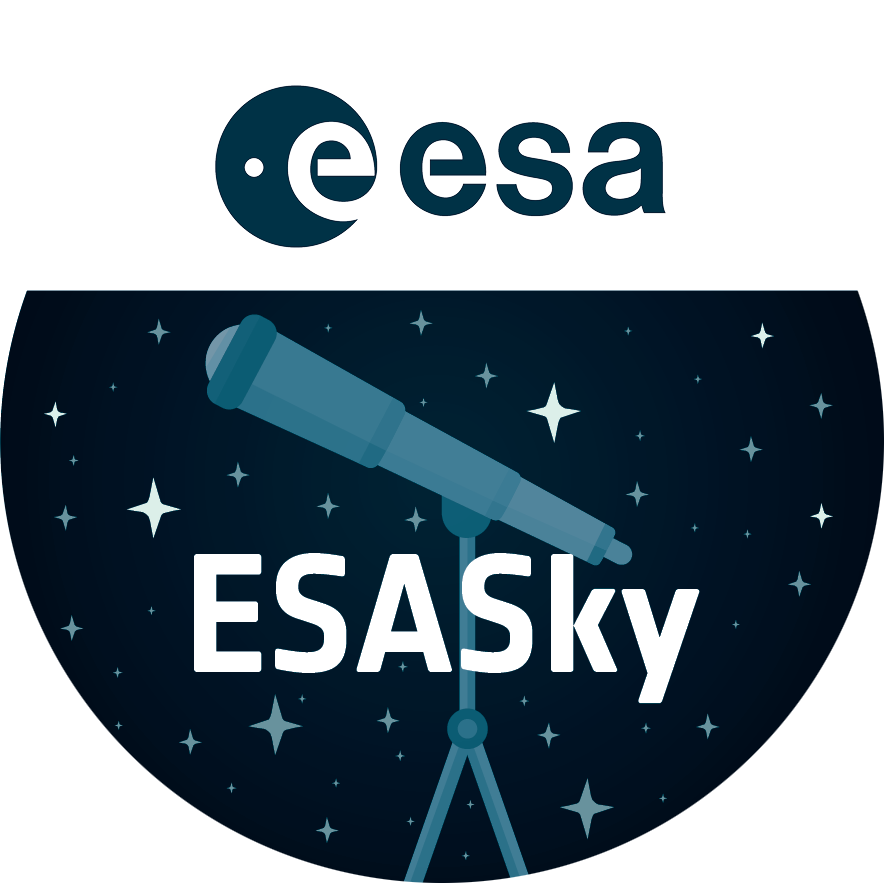Swirling spiral in Hydra
The swirling spiral galaxy in this NASA/ESA Hubble Space Telescope Picture of the Week is NGC 3285B, which resides 137 million light-years away in the constellation Hydra (The Water Snake). Hydra has the largest area of the 88 constellations that cover the entire sky in a celestial patchwork. It’s also the longest constellation, stretching 100 degrees across the sky. It would take nearly 200 full Moons, placed side by side, to reach from one side of the constellation to the other.
NGC 3285B is a member of the Hydra I cluster, one of the largest galaxy clusters in the nearby Universe. Galaxy clusters are collections of hundreds to thousands of galaxies that are bound to one another by gravity. The Hydra I cluster is anchored by two giant elliptical galaxies at its centre. Each of these galaxies is about 150,000 light-years across, making them about 50% larger than our home galaxy, the Milky Way.
NGC 3285B sits on the outskirts of its home cluster, far from the massive galaxies at the centre. This galaxy drew Hubble’s attention because it hosted a Type Ia supernova in 2023. Type Ia supernovae happen when a type of condensed stellar core called a white dwarf detonates, igniting a sudden burst of nuclear fusion that briefly shines about 5 billion times brighter than the Sun. The supernova, named SN 2023xqm, is visible here as a blue-ish dot on the left edge of the galaxy’s disc.
Hubble observed NGC 3285B as part of an observing programme that targeted 100 Type Ia supernovae. By viewing each of these supernovae in ultraviolet, optical, and near-infrared light, researchers aim to disentangle the effects of distance and dust, both of which can make a supernova appear redder than it actually is. This programme will help refine cosmic distance measurements that rely on observations of Type Ia supernovae.
[Image Description: A spiral galaxy with a disc made up of several swirling arms. Patchy blue clouds of gas are speckled over the disc, where stars are forming and lighting up the gas around them. The core of the galaxy is large and shines brightly gold, while the spiral arms are a paler and faint reddish colour. Neighbouring galaxies - from small, elongated spots to larger swirling spirals - can be seen across the black background.]
Links
Credit:ESA/Hubble & NASA, R. J. Foley (UC Santa Cruz)
About the Image
| Id: | potw2529a |
|---|---|
| Type: | Observation |
| Release date: | 21 July 2025, 06:00 |
| Size: | 2383 x 2979 px |
About the Object
| Name: | NGC 3285B |
|---|---|
| Distance: | 137 million light years |
| Constellation: | Hydra |
| Category: | Galaxies |
Classic Wallpapers
Coordinates
| Position (RA): | 10 34 36.52 |
|---|---|
| Position (Dec): | -27° 38' 54.39" |
| Field of view: | 1.57 x 1.97 arcminutes |
| Orientation: | North is 185.1° left of vertical |
Colours & filters
| Band | Wavelength | Telescope |
|---|---|---|
| Ultraviolet UV | 300 nm |
Hubble Space Telescope
WFC3 |
| Ultraviolet UV | 275 nm |
Hubble Space Telescope
WFC3 |
| Ultraviolet U | 336 nm |
Hubble Space Telescope
WFC3 |
| Infrared Y | 1.05 μm |
Hubble Space Telescope
WFC3 |
| Infrared YJ | 1.1 μm |
Hubble Space Telescope
WFC3 |
| Infrared JH | 1.4 μm |
Hubble Space Telescope
WFC3 |
| Infrared H | 1.6 μm |
Hubble Space Telescope
WFC3 |


